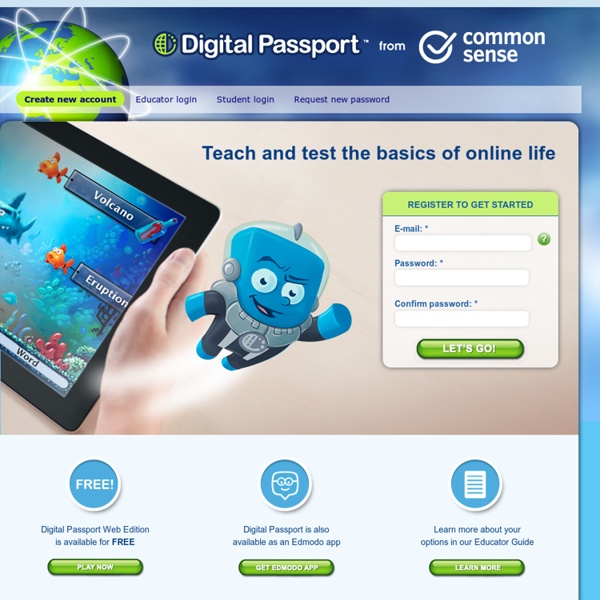



https://digitalpassport.org/educator-registration
Related: Safer internet day • `test 1026Webonauts Internet Academy Come play again later! Come play again tomorrow! Save The Pacific Northwest Tree Octopus Help Save The ENDANGERED From EXTINCTION! The Pacific Northwest Tree Octopus Rare photo of the elusive tree octopus Cyberbullying guidance for schools Cyberbullying: Understand, Prevent and Respond Guidance for Schools Cyberbullying is a form of bullying, and research reveals it has increased to affect 12% of young people in this country. This Guidance is designed to support schools in preventing and responding to cyberbullying. The Guidance comprises of four main sections below. Can you google that? – informationssökning på engelska Att internet flyttat in i våra klassrum är det ingen som har missat, men att det smugit sig in bland kunskapskraven är det många som missat, försöker låtsas om att de inte sett eller helt enkelt tycker är riktigt jobbigt. Men det finns ju där, vad vi än tycker om det. Det ska undervisas och bedömas, säga vad man vill om det. Att gå in på hur relevant och effektivt eleverna återanvänder sina sökresultat i sin egna produktion är en diskussion i sig, men nu tänkte jag fokusera på själva undervisningen.
Share a heart On 9th February 2016 we’re encouraging everyone to play their part and #shareaheart for Safer Internet Day! We are using the heart, a universal sign for love, to promote respect and kindness online this Safer Internet Day. To help us spread the love, we want schools, organisations and individuals to take to social media and share their own heart filled messages, images or videos using the hashtag #shareaheart. Whether it’s a positive message in our specially designed heart signs, a post filled with heart emojis, or something more creative, there are lots of ways you can get involved in the #shareaheart campaign. Fill our heart with your own message and share it on social media: